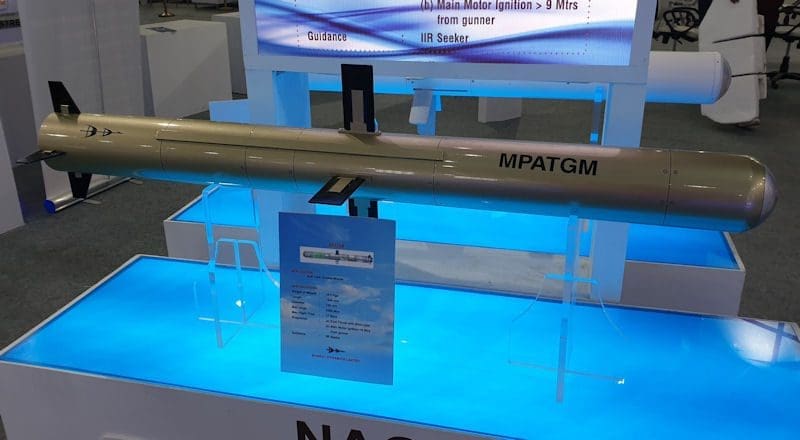
In this article, we will discuss the MPATGM (Man-Portable Anti-Tank Guided Missile) that DRDO successfully test-fired recently on January 11, 2022. The final configuration of the missile was tested at the minimum range of 200m successfully.
The Need for an MPATGM
The name of the missile is self-explanatory. It consists of a lightweight launcher and an anti-tank missile. It will be used by infantry and para special forces of the Indian army in the anti-tank role. The entire system is portable and can be carried around by one or two soldiers at the most during operations. A few examples of MPATGM’s in use around the world include the US FGM 148 Javelin and the Israeli Spike systems. These systems come with fire and forget capability and are crucial in the anti-tank role.

The History of DRDO’s MPATGM
The development of the Man-Portable Anti-Tank Guided Missile (MPATGM) was sanctioned in 2005. Under the project, DRDO was to develop a man-portable version of its NAG/Helina anti-tank missile. It was intended as a third-generation replacement for the second-generation French Milan and the Russian 9m113 Konkurs.
After 13 years of development, the missile was tested for the first time in 2018. A major defense deal for the Spike ATGM was canceled in 2017, it was renewed in 2018 and was canceled in 2019 after the failure of the spike system to meet the Indian army’s qualitative requirements. A small number of missiles were procured to meet the immediate requirements of the Indian army.
Thus, the path for the acquisition of the DRDO’s MPATGM was cleared, and it was added to the first negative import list issued by the Ministry of Defense (MoD) which was applicable from December 2020 onwards.
Product Specifications and Parameters
The MPATGM is a third-generation fire and forgets anti-tank guided missile. It is directly derived from the NAG missile. It weighs merely 14.5 Kg, and its Command and Launch Unit (CLU) weighs only 14.25 Kg making it one of the lightest systems of this category available in the market.
It is equipped with a High Explosive Anti-Tank warhead (HEAT). These missiles engage the target in the top attack mode bypassing the tank’s Active Protection System (APS). It is armed with Imaging Infrared Seeker (IIR) which uses a real-time Artificial Intelligence (AI) based image processing unit that helps the missile to adjust its flight path to achieve maximum kill probability.
It is powered by a dual thrust rocket motor and a tube-based ejection motor giving the missile an impressive range of 200m to 4 Km. The CLU will be equipped with digital sights and a laser designator.

What Next?
The missile will be sent to the Indian army for its user trials. If the army is satisfied with the MPATGM then it will acquire these systems for its infantry and para special forces. The MPATGM will be manufactured at the Bharat Dynamics Limited facility in Bhanoor, Telangana.
These systems are as capable as their western counterparts and will play an important role in bolstering the anti-tank capabilities of the Indian army. The successful development of these missiles is another step towards self-reliance in the field of defense manufacturing.
These systems are world-class and are cheaper than their western counterparts, giving them huge export potential once they enter into mass production.




Be the first to comment